-
WróćX
-
Компоненты
-
-
Category
-
Полупроводниковые приборы
- Диоды
- Тиристоры
-
Электро-изолированные модули
- Электроизолированные модули | ВИШАЙ (ИК)
- Электроизолированные модули | INFINEON (EUPEC)
- Электроизолированные модули | Семикрон
- Электроизолированные модули | POWEREX
- Электроизолированные модули | IXYS
- Электроизолированные модули | ПОЗЕЙКО
- Электроизолированные модули | ABB
- Электроизолированные модули | TECHSEM
- Przejdź do podkategorii
- Выпрямительные мостики
-
Транзисторы
- Транзисторы | GeneSiC
- Модули SiC MOSFET | Mitsubishi
- Модули SiC MOSFET | STARPOWER
- Модули ABB SiC MOSFET
- Модули IGBT | МИЦУБИСИ
- Транзисторные модули | MITSUBISHI
- Модули MOSFET | МИЦУБИСИ
- Транзисторные модули | ABB
- Модули IGBT | POWEREX
- Модули IGBT | INFINEON (EUPEC)
- Полупроводниковые элементы из карбида кремния (SiC)
- Przejdź do podkategorii
- Драйвера
- Блоки мощности
- Przejdź do podkategorii
- Электрические преобразователи
-
Пассивные компоненты (конденсаторы, резисторы, предохранители, фильтры)
- Резисторы
-
Предохранители
- Миниатюрные предохранители для электронных плат серии ABC и AGC
- Быстрые трубчатые предохранители
- Медленные вставки с характеристиками GL/GG и AM
- Ультрабыстрые плавкие вставки
- Быстрые предохранители английский и американский стандарт
- Быстрые предохранители европейский стандарт
- Тяговые предохранители
- Высоковольтные предохранительные вставки
- Przejdź do podkategorii
-
Конденсаторы
- Конденсаторы для электромоторов
- Электролитические конденсаторы
- Конденсаторы типа snubbers
- Конденсаторы мощности
- Конденсаторы для цепей DC
- Конденсаторы для компенсации пассивной мощности
- Высоковольтные конденсаторы
- Конденсаторы большой мощности для индукционного нагрева
- Импульсные конденсаторы
- Конденсаторы звена постоянного тока
- Конденсаторы для цепей переменного/постоянного тока
- Przejdź do podkategorii
- Противопомеховые фильтры
- Ионисторы
- Защита от перенапряжения
- Фильтры обнаружения излучения TEMPEST
- Ограничитель перенапряжения
- Przejdź do podkategorii
-
Реле и контакторы
- Теория реле и контакторы
- Полупроводниковые реле AC 3-фазные
- Полупроводниковые реле DC
- Контроллеры, системы управления и аксессуары
- Системы плавного пуска и реверсивные контакторы
- Электро-механические реле
- Контакторы
- Оборотные переключатели
-
Полупроводниковые реле AC 1-фазные
- РЕЛЕ AC 1-ФАЗНЫЕ СЕРИИ 1 D2425 | D2450
- Однофазное реле AC серии CWA и CWD
- Однофазное реле AC серии CMRA и CMRD
- Однофазное реле AC серии PS
- Реле AC двойное и четверное серии D24 D, TD24 Q, H12D48 D
- Однофазные твердотельные реле серии gn
- Однофазные полупроводниковые реле переменного тока серии ckr
- Однофазные реле переменного тока ERDA И ERAA SERIES для DIN-рейки
- Однофазные реле переменного тока на ток 150А
- Двойные твердотельные реле, интегрированные с радиатором для DIN-рейки
- Przejdź do podkategorii
- Полупроводниковые реле AC 1-фазные для печати
- Интерфейсные реле
- Przejdź do podkategorii
- Индукционные компоненты
- Радиаторы, варисторы, термическая защита
- Вентиляторы
- Кондиционеры, оборудование для шкафов, охладители
-
Аккумуляторы, зарядные устройства, буферные источники питания и инверторы
- Аккумуляторы, зарядные устройства - теоретическое описание
- Модульные литий-ионные аккумуляторы, пользовательские батареи, Система управления батареями (BMS)
- Аккумуляторы
- Зарядные устройства и аксессуары
- Резервный источник питания ИБП и буферные источники питания
- Преобразователи и аксессуары для фотовольтаики
- Хранилище энергии
- Топливные элементы
- Литий-ионные аккумуляторы
- Przejdź do podkategorii
-
Автоматика
- Подъемники Spiralift
- Запчасти для дронов Futaba
- Концевые выключатели, Микровыключатели
- Датчики Преобразователи
- Пирометры
- Счетчики, Реле времени, Панельные измерительные приборы
- Промышленные защитные устройства
- Световые и звуковые сигнальные установки
- Термокамеры, Тепловизоры
- LED-экраны
- Управляющая аппаратура
- Przejdź do podkategorii
-
Провода, литцендрат, гофрированные рукава, гибкие соединения
- Провода
- Кабельные вводы и муфты
- Многожильные провода (Lica)
-
Кабели и провода для специальных применений
- Удлинительные и компенсационные провода
- Провода для термопар
- Присоединительные провода для датчиков PT
- Многожильные провода темп. от -60C до +1400C
- Провода среднего напряжения
- Провода зажигания
- Нагревательные провода
- Одножильные провода темп. от -60C до +450C
- Железнодородные провода
- Нагревательные провода в Ex
- Przejdź do podkategorii
- Оболочки
-
Плетеные кабели
- Плоские плетеные кабели
- Круглые плетеные кабели
- Очень гибкие плетеные кабели - плоские
- Очень гибкие плетеные кабели - круглые
- Медные цилиндрические плетеные кабели
- Медные цилиндрические плетеные кабели и кожуха
- Гибкие заземляющие ленты
- Цилиндрические плетеные провода из луженой и нержавеющей стали
- Медные изолированные плетеные провода PCV - температура до 85 градусов C
- Плоские алюминиевые плетеные провода
- Соединительный набор - плетеные провода и трубки
- Przejdź do podkategorii
- Аксессуары для тяги
- Кабельные наконечники
- Изолированные эластичные шины
- Многослойные гибкие шины
- Системы прокладки кабеля (PESZLE)
- Przejdź do podkategorii
- Zobacz wszystkie kategorie
-
Полупроводниковые приборы
-
-
- Поставщики
-
Программы
- Energy bank
- Автоматика HVAC
- Горное дело, металлургия и литейное дело
- Двигатели и трансформаторы
- Измерение и регулирование температуры
- Измерение и регулирование температуры
- Индукционный нагрев
- Индустриальная автоматизация
- Источники питания (ИБП) и выпрямительные системы
- Компоненты для потенциально взрывоопасных сред (EX)
- Машины для сушки и обработки древесины
- Машины для термоформования пластмасс
- Оборудование для распределительных, контрольных и телекоммуникационных шкафов
- Печать
- Приводы переменного и постоянного тока (инверторы)
- Промышленная автоматика
- Промышленные защитные устройства
- Сварочные аппараты и сварочные аппараты
- Станки с ЧПУ
- Трамвай и ж / д тяга
-
Монтаж
-
-
Индукторы
-
-
Индукционные устройства
-
-
Услуга
-
- Контакт
- Zobacz wszystkie kategorie
Distance and pressure transducers

Measuring transducers are used to convert physical quantities into other physical quantities according to specific relationships. Among industrial devices of this type, transducers for electrical values such as voltage or current are the most common. In systems with sensors, transducers allow the power of the transformed signal to be increased in order to facilitate its processing in further industrial processes.
Distance transducers most often convert force or speed into a corresponding output signal in analogue or digital form.
Pressure transducers are used to measure the pressure of gases or liquids, which it converts into a proportional output signal.
In the following article, we will introduce you to the principle of operation and types of specific solutions of distance and pressure transducers.
Working principle of distance and pressure transducers
-
Distance transducer
The working principle of distance transducers is based on sending some kind of signal, e.g. laser, infrared LED, ultrasonic waves or information about the movement and position of the test object by means of a cable attached to it. Then, based on the information about the signal returning to the transducer or the change in position of the test object, an appropriate output signal is generated from the transducer element. This information may include the intensity of the returning signal, the time required for the signal to return, the motion generated on the transducer element, etc. Many devices have additional components that appropriately amplify a given signal so that it can be easily worked on further in industrial processes.
-
Pressure transducer
The most common pressure transducer designs include a force collector, such as a flexible diaphragm, and a conductive element. Such an element uses a dependent resistive, capacitive, or inductive method to generate an electrical signal. The type of measurement method will be determined by the components used to build the transducer.
Pressure transducers use strain gauges to measure the force acting on them. Strain gauges are deformed and this causes a change in the voltage they produce. The pressure measurement is based on the degree of voltage change.
There are also advanced versions of pressure transducers that use capacitive or piezoelectric sensors instead of strain gauges. These are chosen based on the range, operating environment and precision required of the pressure sensor.
Types of transducers available on the market
The type of transducer depends on what signal it is capturing e.g. distance using reflected light and motion using a cable in the case of distance transducers , or the type of pressure being measured in the case of pressure transducers. An additional factor influencing the type may also be the output signal of the transducer e.g. current voltage, current intensity or digital value. Depending on these factors, the transducer may differ in its internal design.
Examples of distance transducers
There are many unique options to choose from for distance transducers. We focus primarily on three varieties of distance sensors:
- IR LED distance transducers work on the principle of triangulation, measuring distance based on the angle of the reflected beam. The beam of infrared light emitted by the LED is reflected from the object under observation at a certain angle. The reflected beam is read by a transducer detector to process the collected data into a specific output signal.
Such solutions are characterized by their small size, ability to work at any time of day or night, and ability to measure distances from objects with complex surfaces. The disadvantages of such applications, however, are a limited measuring range and dependence on environmental conditions and, for example, the colour of the measuring object.
- Ultrasonic distance transducers detect the distance to objects by emitting high frequency sound waves. The emitter sends the wave toward the object and activates a timer. The wave bounces off the object and is captured by the transducer's receiver, then the timer is stopped. The distance is calculated from the speed of sound and the travel time of the high frequency wave.
The advantages are transparency and the ability to work with objects of any color. The solution does not consume as much power as other applications, but also has a limited measurement range, low resolution, inability to measure objects with uneven surfaces as well as objects that move at high speed.
- Link Distance Transducers measure position using a string that coils and unwinds on a measuring spool. The end of the string is attached to the test object, and its motion affects the spool. A rotary reader (potentiometer or encoder) transmits the rotational motion of the spool to the appropriate components, which convert it into an output signal.
Examples of pressure transducers
For pressure transducers, there are three defined values for measuring pressure. Although there are other types, such as vacuum or sealed gauge, all can be classified into these three categories. For the diaphragm type, it is easiest to understand the reference pressure as the pressure exerted across the diaphragm from the process being measured.
- Absolute pressure transducers measure pressure relative to an ideal vacuum using absolute zero as a reference. An example is a barometric pressure transducer. They also include sealed pressure gauges in which the signal has been shifted to match the pressure of the gauge at the time of construction.
- Gauge pressure transducers measure pressure relative to atmospheric pressure. An example of such a sensor is a tire pressure sensor. It also includes vacuum sensors whose signals are inverted so that they signal a positive result when the measured pressure is lower than atmospheric pressure.
- Differential pressure transducers measure the difference between two pressures on each side of the sensor. An example is a fluid pressure transducer, in which the level of the fluid above and below is measured.
Applications for transducers in industry
Distance transducer applications:
- Automation and Robotics;
- Smart cars;
- Drones and unmanned vehicles;
- TVs, computers;
- Security systems such as alarms;
- Systems for industrial process control and monitoring.
Pressure transducer applications:
- Pressurized Engine Systems;
- Production and assembly lines;
- Containers with production material;
- Sanitary systems in the pharmaceutical industry;
- Control systems, e.g. gas leakage detection;
- HVAC systems.
Связанные продукты
Связанные посты
 Now available – DC/DC converters from PREMIUM
Now available – DC/DC converters from PREMIUM
 New release in DACPOL lighting for lathes – Kira covers
New release in DACPOL lighting for lathes – Kira covers




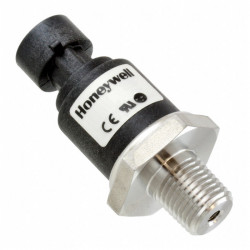
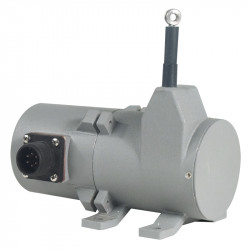
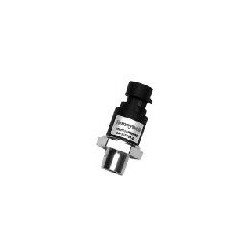
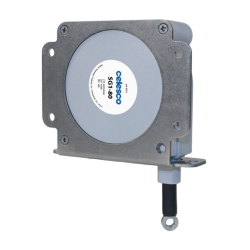
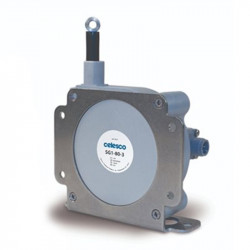
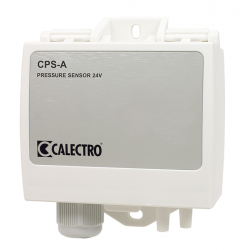
Оставить комментарий